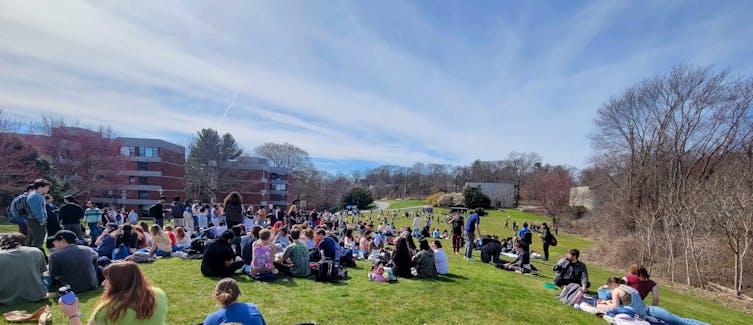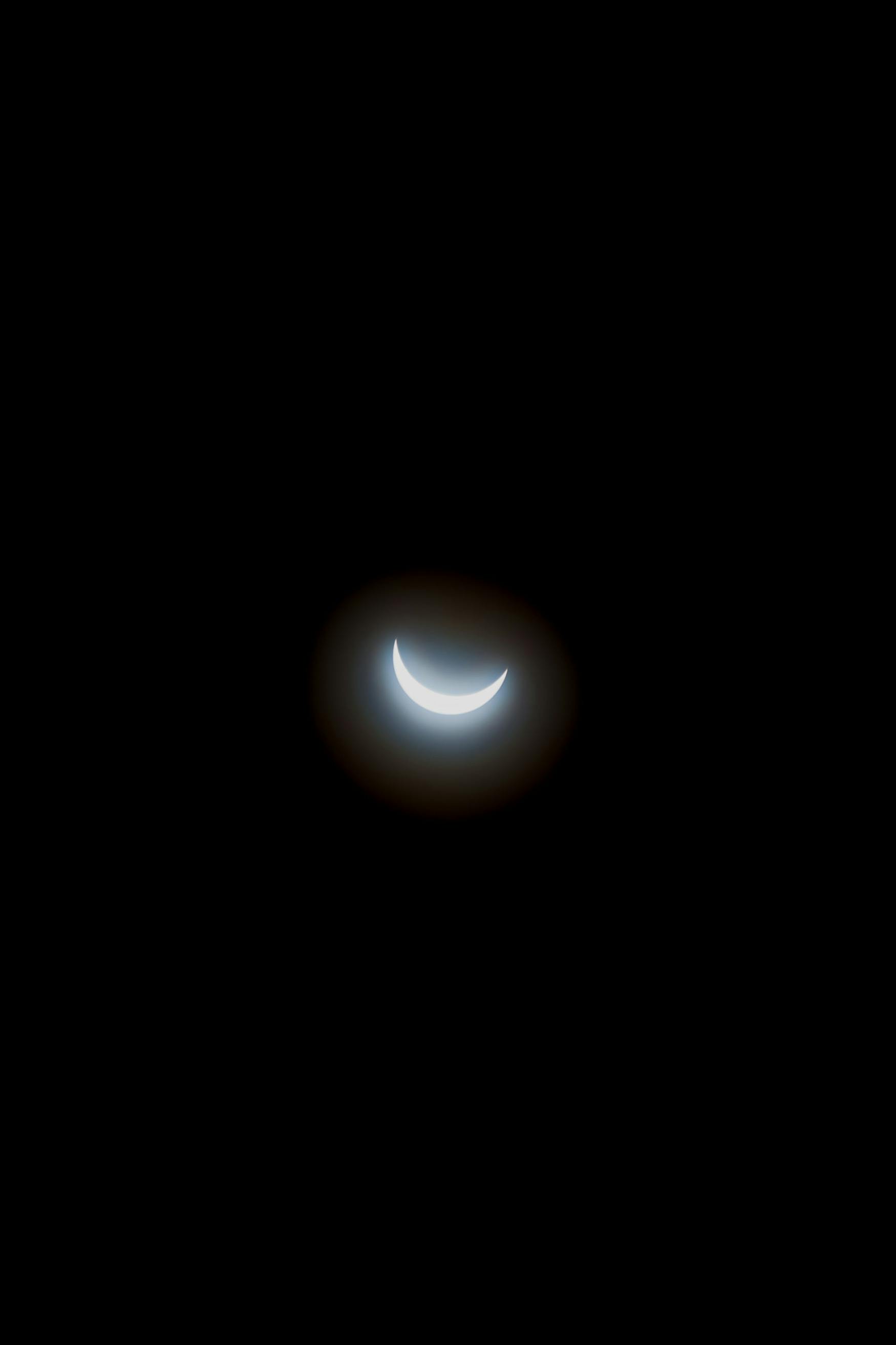Brandeis enjoys partial solar eclipse
Students, faculty and community members gathered to observe this natural phenomenon occurring from many vantage points around campus.
On April 8, the Brandeis community watched a near total eclipse elapse in the sky between 2:15 p.m. and 4:39 p.m., reaching peak coverage at 3:29 p.m. Community members mainly congregated on Fellows Garden, Chapels Field and the Carl J. Shapiro Science Center’s deck to get a glimpse of the phenomenon. Since the eclipse’s path of totality traveled over Vermont, New Hampshire and Maine, Waltham and the rest of western Massachusetts saw the eclipse at 93 percent totality.
“What happens in a solar eclipse is, the moon, as it turns around the earth, gets into a perfect position to block the sun. … Our moon is exactly the perfect distance from us to be as big as the sun in the sky,” Astronomy Club president Rebecca Spinner ’25 said in an April 8 interview with The Justice. Since the moon and the sun become the same size, the moon can perfectly obstruct the sun from the earth, completely blocking the sun from a limited vantage point across the planet — which is the path of totality. All areas not included in the path of totality see the eclipse from an angle, which is why any other location sees a partial eclipse, as demonstrated in Waltham.
Starting at 2:00 p.m., the Astronomy Club and the University’s Department of Student Engagement handed out free protective glasses to observe the eclipse. Despite the eclipse, looking at the sun directly can still threaten serious eye injury, per the National Air and Space Administration. With this precaution in mind, students started to line up in Fellows Garden far before protective glasses were being distributed. By 1:55 p.m., the line reached the Volen National Center for Complex Systems. By 2:15, there were no more glasses available, leaving the remaining observers to share them among themselves.
Spinner explained that the shortage came as a surprise to her. She said that after the Department of Student Engagement contacted her and asked if she had pending plans, she purchased about 500 eclipse glasses, and DSE contributed 100 additional glasses. Spinner gave 50 of these glasses to the Physics Club for its eclipse picnic.
“There were a lot of glasses, I really thought it would be enough,” Spinner said emphatically. Rather than expecting people to stay for the eclipse’s entirety, she assumed they would stop for about thirty minutes, return the glasses and continue on their way.
“I really didn’t expect people to camp out on the lawn — if I did, I would have gotten 1000 or more,” Spinner expressed. “I’m really happy that there was so much excitement for things like this, but I didn’t expect it.” She said that in the days leading up to the eclipse, no one reached out to her about it until the morning of, insinuating that most people did not realize that the event was occurring until the last minute.
The last solar eclipse that was visible from the U.S. took place in 2017, but this eclipse was noteworthy because it passed over more densely populated areas and spent a longer period of time in totality, the National Aeronautics and Space Administration writes.
Spinner recalled watching the 2017 partial eclipse in Germany, the path of totality running through Svalbard. Her school organized an eclipse-watching event where they supplied protective glasses.
”But this [eclipse] was completely different,” she said, having traveled to Vermont to see its full totality, rather than Waltham’s 93 percent. “It’s a completely different thing. I would say it was the most incredible thing I’ve ever seen.” She said that experiencing a full eclipse is worth doing at least once.
The next total solar eclipse to cross the U.S. from the West to the East coast will occur in 2045 — the two projected to happen in 2033 and 2044 will only cover specific states in their paths of totality.





Please note All comments are eligible for publication in The Justice.